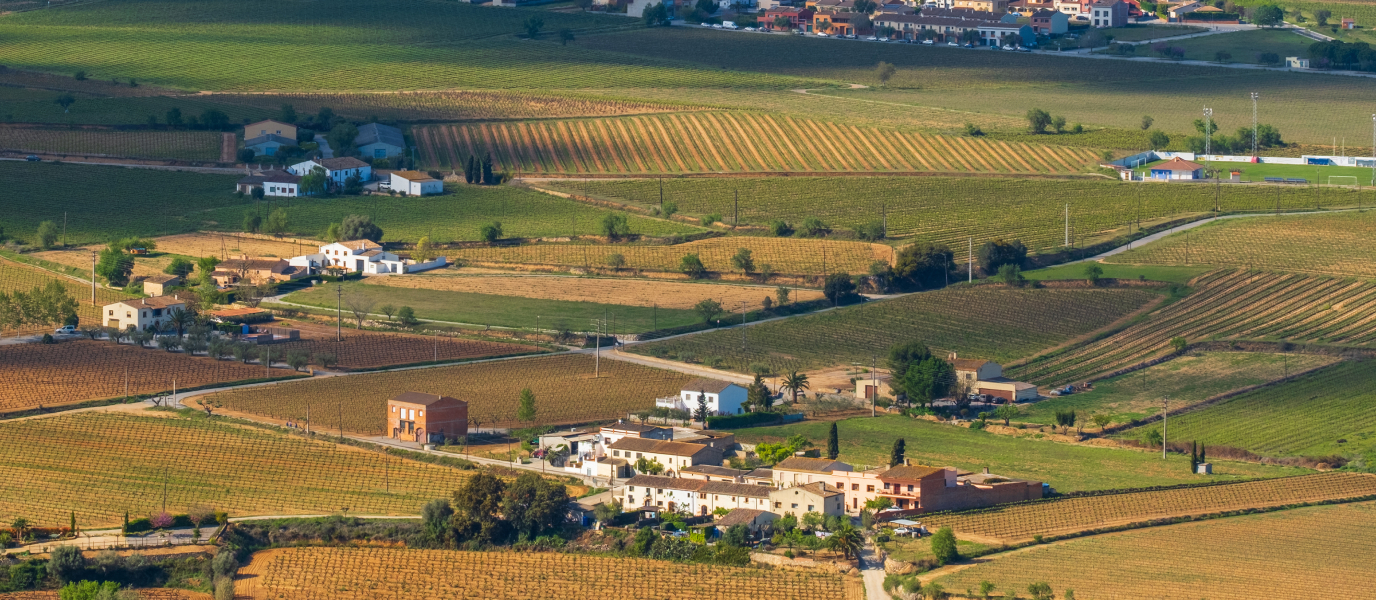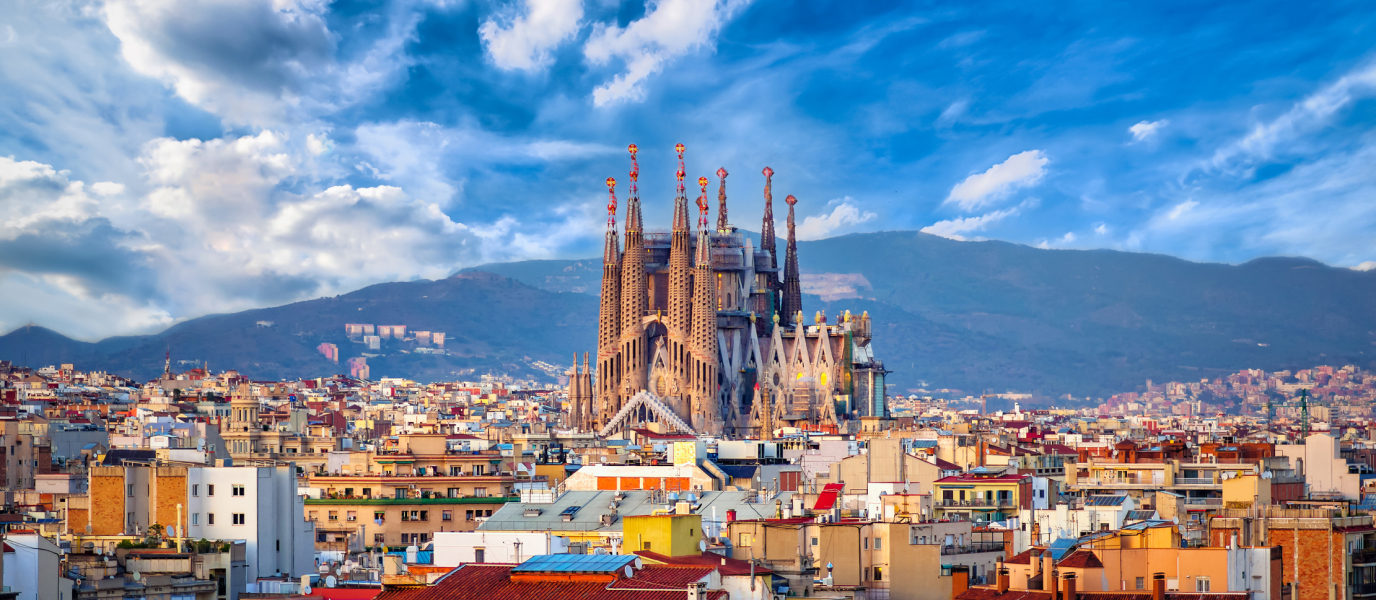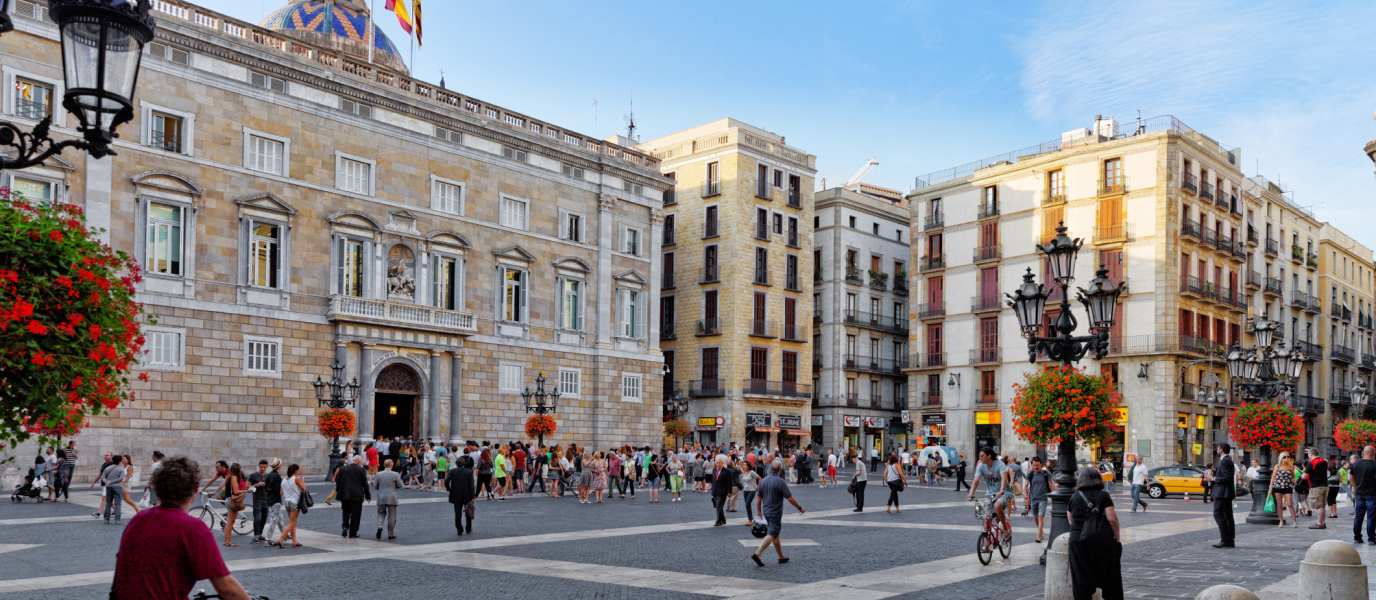Montjuïc Castle (Castell de Montjuïc in the Catalan language) sits astride the top of the mountain that gives it its name. This is an essential visit on any trip to Barcelona, and is the site of some of the most important events in the city’s recent history. Firstly, there is the Olympic Stadium and the Palau Sant Jordi, two of the most illustrious settings of the 1992 Olympic Games. This is also, however, the location of the Palau Nacional de Montjuïc, home to the Museu Nacional d’Art de Catalunya [National Museum of Art of Catalonia] and its impressive art collection.
The castle itself owes its present appearance to the modifications carried out by the military engineer Juan Martín Cermeño during the second half of the eighteenth century.
The origins of Montjuïc Castle
The origins of Montjuïc Castle date back many centuries before Juan Martín Cermeño’s alterations. In fact, it is known that an Iberian settlement once existed here, established between the seventh and sixth centuries B.C.
The site was also settled by the Romans, the Visigoths and the Muslims until, in the eleventh century, a beacon or watchtower was built on the highest point of the mountain. This was the true forerunner of the present castle. Construction of the castle began in the seventeenth century, during what is known as the Guerra dels Segadors [Reapers’ War] or Corpus de Sang (1640). The structure was severely damaged during the Battle of Montjuïc (1641), and was rebuilt by the Consell de Cent [Council of One Hundred, Barcelona’s historic city council] and the city’s War Council.
Following the conquest of this stronghold and of the city itself by the army of Philip IV in 1652, work to improve the castle was undertaken towards the end of the seventeenth century by the engineer Lorenzo Tossi. This involved the construction of a citadel, three defensive ramparts and a rectilinear frontage overlooking the sea (the sea-facing wall).
During the War of Succession (1701-1714), however, the fortress was completely destroyed. Faced with this situation, the authorities decided to rebuild both the castle and the citadel and the work was entrusted to the engineer Cermeño.
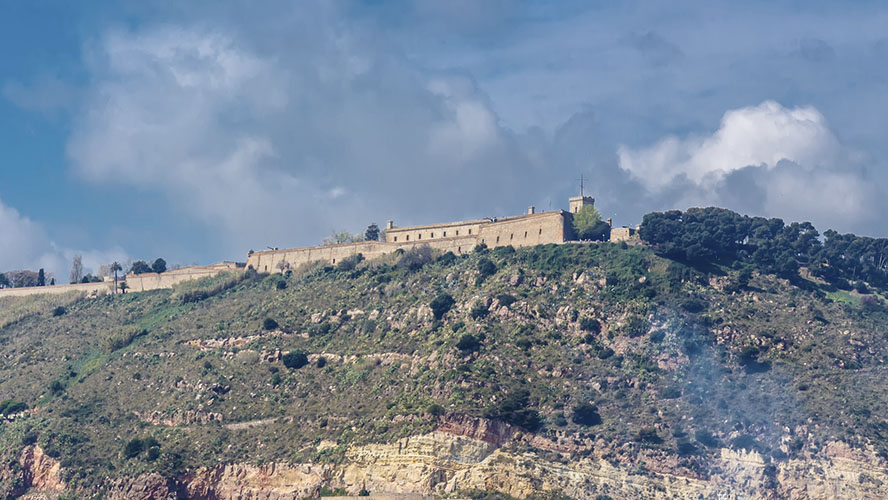
Montjuïc Castle’s darkest hour
One of the most dreadful chapters in the history of Montjuïc Castle was its use as a military prison during the Franco period. Its walls witnessed the shooting of the president of the Generalitat de Catalunya [Government of Catalonia], Lluís Companys, on 13 August 1940.
In addition to the executions of several officers and civilians who had remained loyal to the Republic.
In the building’s Santa Elena moat, a commemorative monument was raised “to the Fallen”. At the time, the fortress had become a frequent setting for the so-called councils of war.
This arrangement persisted until 1960, when part of the castle was handed over to the city in exchange for the opening of a military museum and the raising of a commemorative statue of the dictator General Franco.
It was not until 2007 that full ownership of Montjuïc Castle returned to the city of Barcelona. Since then, modifications have been made to many of the rooms, and the military museum has been dismantled. Nowadays, the monument has been awarded the status of a National Asset of Cultural Interest by the Generalitat of Catalonia.
What is Montjuïc Castle like?
Montjuïc Castle as it appears today is largely the same as it was following its reconstruction in the eighteenth century. Today’s visitors can see:
- The access bridge and the main façade: the access bridge crosses the moat of Santa Eulàlia. The outstanding feature of the façade is the magnificent, Neo-classical-style entrance, crowned by the crest of Charles III (Charles of Bourbon).
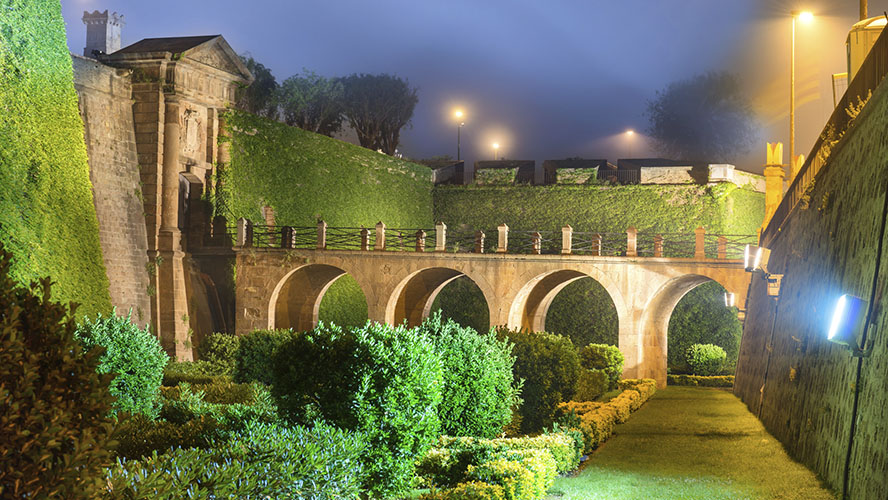
- There are four ramparts in total, each with its own name: The ramparts of Sant Carles, Santa Amàlia, Velasco and Llengua de Serp [Snake’s Tongue]. This last takes its name from its triangular shape, and it is located at Montjuïc Castle’s weakest point.
- The parade ground is enclosed by a colonnade: the castle’s main offices and other rooms are accessed from here. Nowadays, four of these rooms house the Montjuïc Castle Interpretation Centre.
- The terrace and the watchtower: the terrace is actually the roof of the colonnade that encloses the parade ground. It commands splendid views. The tower is the modern-day successor of the eleventh-century beacon.
- The sea wall: a defensive stretch of wall, 155 metres in length, runs around the perimeter of the original fortress. The dungeons lie within this wall.
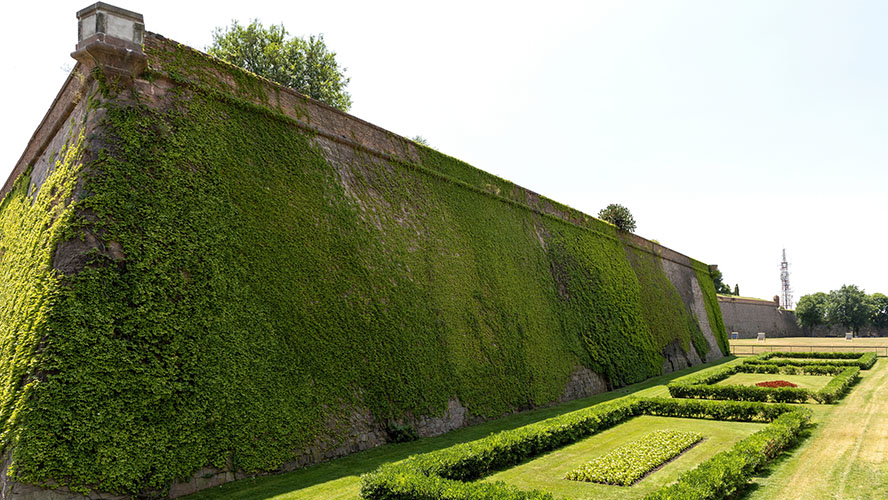
- The moat: dug during the eighteenth-century modifications; it was converted into gardens during the building of the military museum (twentieth century). Nowadays, it contains several memorials to those executed during the Spanish Civil War (1936-1939) and in the subsequent period of repression.
- The hornwork: a series of defensive constructions built between the first and second rings of the castle’s fortifications. Its outstanding feature is the ravelin, in the centre of this area and within the moat, designed to be the main means of defending this part of the fortress.
- The sea and land lunettes: these are two outworks (not joined to the rest of the building) projecting out as a defensive outpost.
- The covered walkway: a parapet runs parallel to the castle’s outer perimeter, behind which lies a passage between the different areas
A viewing point over Barcelona
Thanks to its position close to the coastline, and its height (185 metres above sea level), the mountain of Montjuïc offers a superb vantage point over Barcelona. The castle’s terrace affords a particularly spectacular panorama, taking in the entire city and the surrounding area. It extends from the beautiful and vast Mediterranean Sea to the Sierra de Collserola and Tibidabo and, on the other side, the airport. Of course, from here you can also see the Port of Barcelona and some of the city’s tallest buildings. These include the Cathedral, the Sagrada Familia, the towers of the Port Olímpic and the Torre Agbar [Agbar Tower].
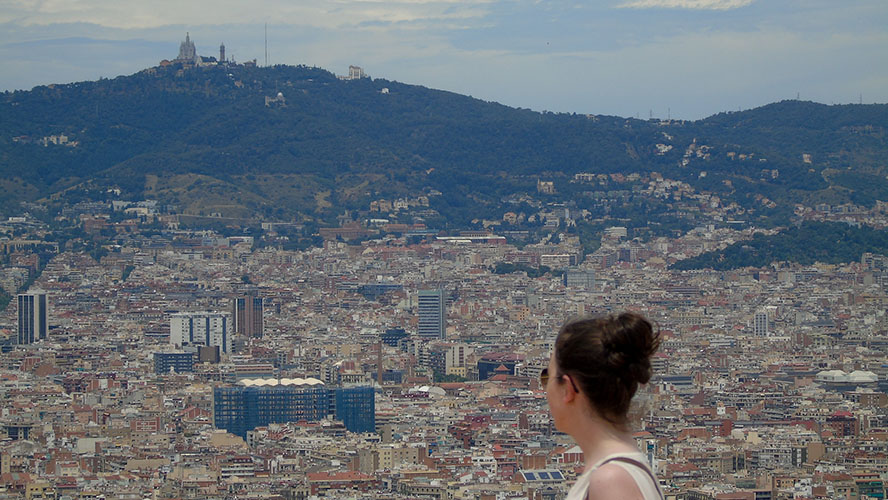
Towards the end of spring, and taking advantage of Montjuïc Castle’s extended opening hours, this is one of the finest spots in Barcelona to see the breathtaking sunsets with which this city is blessed.





































































